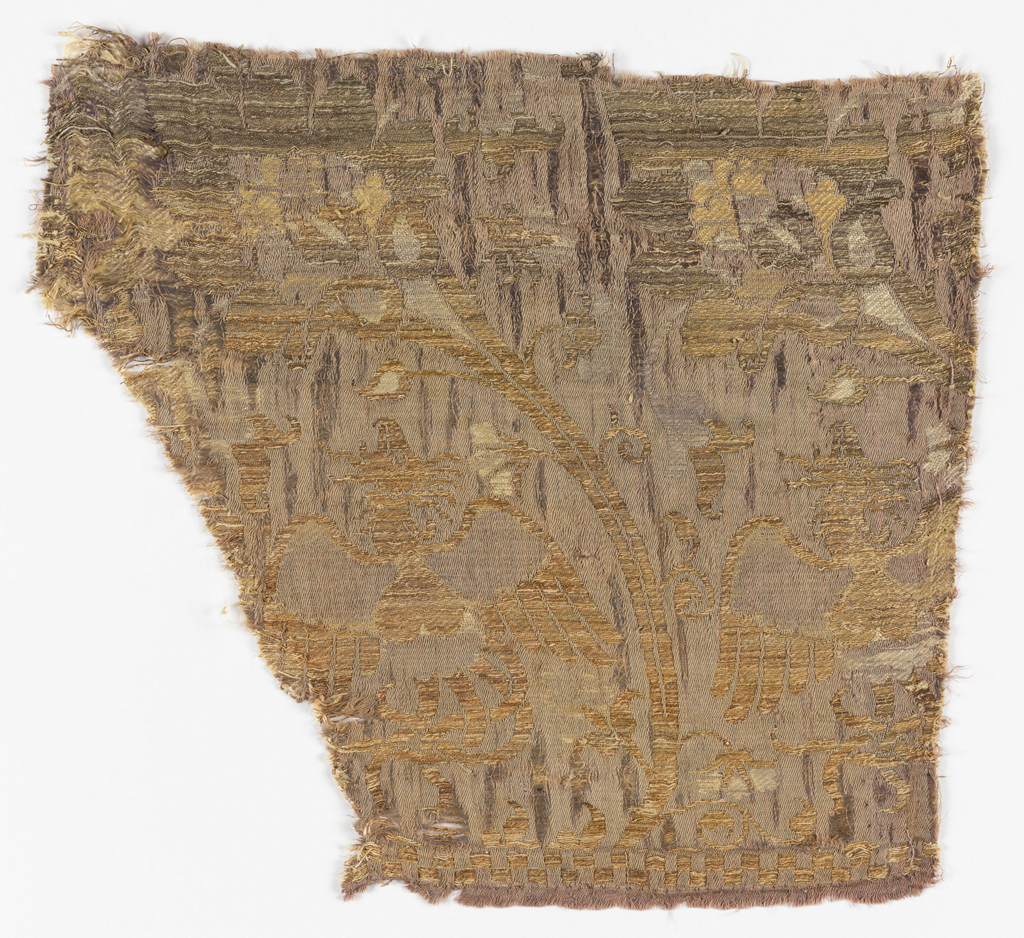While the primary goal of a conservator continues to be the documentation and preservation or retardation of deterioration, conservation practices and materials have evolved over the years. For example, cellulose acetate was used to store museum collections in the 1940s and 1950s. At the time, it was a great solution and protected fragile objects in transparent encapsulation mounts. The plastic film was thought to be a stable material, but we now know that it has an approximately 50-year lifespan. When the plastic loses its chemical stability, it becomes acidic, embrittled, yellowed, and distorted, causing physical strain on the textile and exposing the fibers to the acidic off-gassing. Through hydrolysis, cellulose acetate generates a damaging acetic acid and the associated tell-tale smell, known as “vinegar syndrome.” In addition to endangering the textiles, this method of housing hampers the curators’ ability to study and share these unique objects with the public and scholarly researchers.
1902-1-284-b Before Treatment. Object in yellowed and distorted cellulose acetate encapsulation. Courtesy of the author.
The Smithsonian’s Collections Care and Preservation Fund funded a grant focused on the removal of cellulose acetate from Cooper-Hewitt’s textile collection with the goal of improving the preservation environment and enhancing safe accessibility. A group of 258 textile fragments were removed from cellulose acetate encapsulations and rehoused in a variety of new custom archival mounts. In this representative example, the textile was stitched into a cellulose acetate encapsulation. The plastic deteriorated and curled along the edges. The textile conservator carefully removed the fragment and constructed a new storage mat with viewing window out of archival materials.
1902-1-284-b After Treatment. Object in new storage window mat. Courtsey of the author.
Like many others that underwent re-housing treatment, this textile is from the 1902 J.P. Morgan gift which forms the core of Cooper-Hewitt’s collection of early woven silks. In addition to 14th century Italian silks, textiles from the 3rd to 17th century represent examples of Coptic, Islamic, and European art. Also preserved were a large group of 18th and 19th century Chinese and Japanese woven silks, fragile fragments from Egypt and India, and a variety of other textiles. Thanks to CCPF’s generous funding, a great number of these treasures are newly accessible on Cooper-Hewitt’s online collection database.


